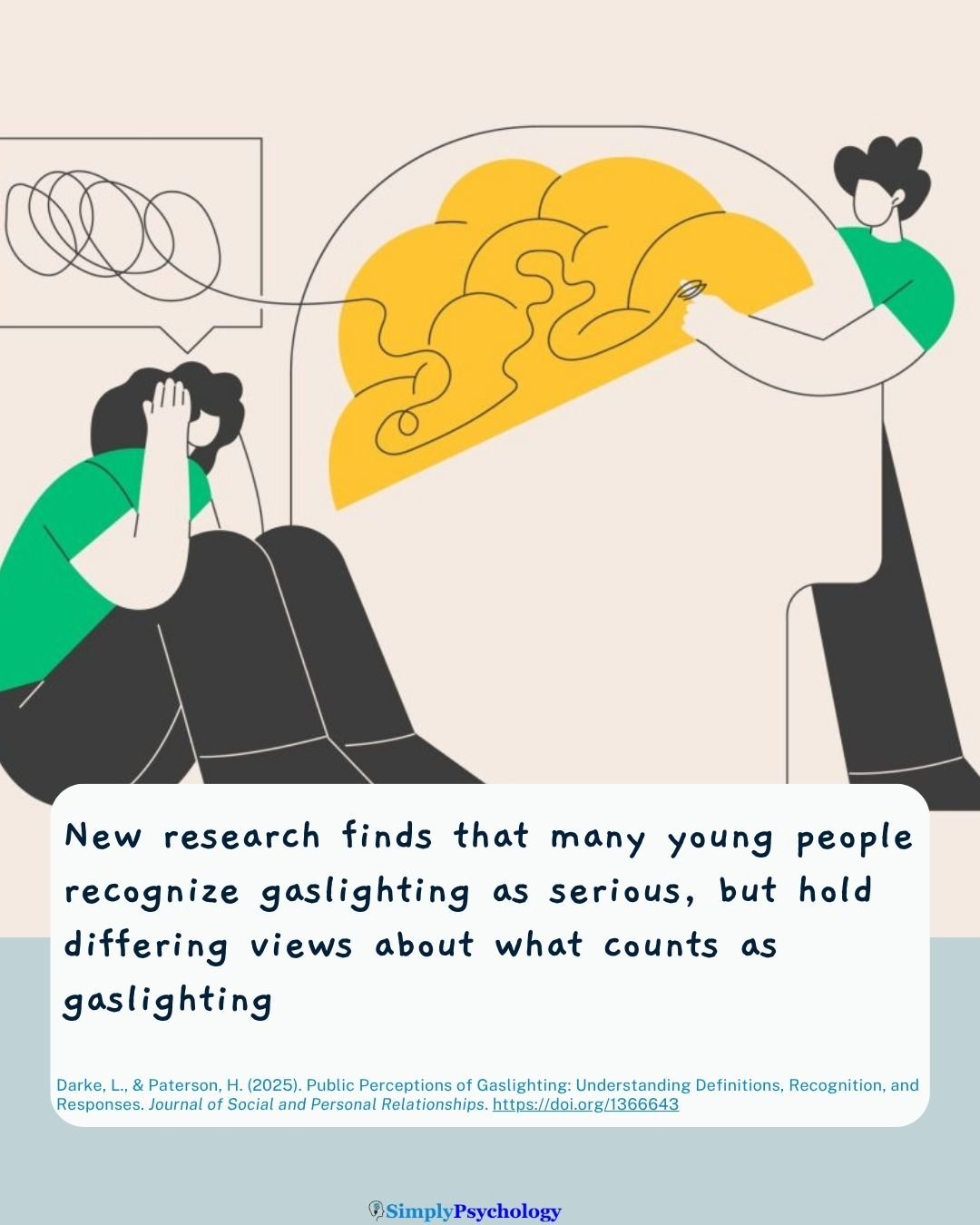Whether in news headlines, therapy sessions, or everyday conversations, the term “gaslighting” has become a familiar label for manipulative behaviour. Yet as the concept spreads, questions linger about what the public actually understands gaslighting to mean.
A new study suggests that while most young adults recognise gaslighting as a serious and unacceptable form of emotional abuse, many still hold differing views about its core features.
A study by Lillian Darke, Helen Paterson, and Celine van Golde, published in the Journal of Social and Personal Relationships (2025), explores how young adults define, recognise, and respond to behaviours labelled as gaslighting.

The researchers found that while university students were generally able to identify gaslighting scenarios and considered them serious and intervention-worthy, they varied in their views about what makes a behaviour count as gaslighting—particularly in terms of intent, repetition, and victim impact.
Gaslighting is often described as a psychological manipulation tactic that undermines a person’s ability to trust their memory, perception, or judgement.
Within intimate partner violence (IPV), it can erode a victim’s self-trust over time and make them more vulnerable to other forms of coercive control.
Despite its clinical and social relevance, gaslighting remains loosely defined in both academic literature and public discourse, which complicates efforts to detect and prevent it.
To explore how the general public understands gaslighting, the study surveyed 595 undergraduate students at the University of Sydney.
Participants were shown short written vignettes describing a fictional conflict between a couple, with variations in whether the manipulative behaviour was intentional, repeated, and whether the victim expressed self-doubt.
Participants then rated the seriousness, acceptability, and need for intervention, and were asked whether the behaviour constituted gaslighting. Those familiar with the term also completed a task identifying key elements of gaslighting from a list.
The researchers found that repetition, intention, and victim self-doubt all increased the likelihood that participants would label the behaviour as gaslighting.
Repeated and intentional acts were also seen as less acceptable and more serious than isolated or accidental ones. However, even in scenarios lacking these features, participants still often identified the behaviour as gaslighting, suggesting broad and inclusive public interpretations.
Most participants considered manipulation and self-doubt central to gaslighting, aligning with definitions used by victim-survivors in earlier studies.
However, over half also selected “intention” as a necessary feature—despite ongoing debate among experts about whether gaslighting must be deliberate.
Participants were more divided on whether repetition, power imbalance, or isolation were essential components, and few saw intimacy or physical intimidation as necessary for defining the behaviour.
This has important implications for mental health and public education.
While it is encouraging that young adults take gaslighting seriously and feel inclined to intervene, the study suggests that public understanding may still lack nuance.
A flexible definition might help apply the concept across settings—from personal relationships to workplaces—but could also risk watering it down.
If gaslighting is used too broadly to describe any disagreement or dishonesty, it may lose its meaning and hinder the recognition of more harmful patterns.
The researchers note that while participants rated all scenarios as serious and reported high willingness to intervene, these responses may not reflect real-world behaviour.
For example, the fictional vignettes presented a relatively low-risk setting, and participants might have felt socially pressured to give pro-intervention answers. In reality, recognising and responding to subtle manipulation can be much harder, particularly when there is no clear pattern of abuse.
Still, the study offers useful insight into public attitudes and highlights areas for future awareness campaigns.
Educating the public about gaslighting’s specific characteristics—such as its repetitive nature, links to other forms of abuse, and impact on self-trust—could help people better identify and respond to it.
This is especially relevant given recent legal reforms in places like New South Wales, where coercive control laws require evidence of intentional patterns of abuse.
As the authors point out, focusing too narrowly on intent may miss the harm caused by manipulative behaviour that is unconscious or not overtly malicious.
Emphasising observable patterns rather than psychological motives may be a more effective strategy for community education and early intervention.
Although the study’s findings are limited to university students, who may be more exposed to psychological concepts than the general population, they provide a starting point for improving how gaslighting is recognised and addressed.
Future research could explore whether similar patterns hold in other age groups, cultural contexts, or among people with different levels of experience with intimate partner violence.
Ultimately, understanding how gaslighting is defined and identified by the public is more than a theoretical issue.
It shapes how people respond to emotional abuse in their relationships, how bystanders intervene, and how victims make sense of their experiences.
As public conversations around mental health and abuse evolve, clarifying the concept of gaslighting may help reduce its misuse—and ensure it remains a meaningful term for a serious form of harm.
Citation
Darke, L., & Paterson, H. (2025). Public Perceptions of Gaslighting: Understanding Definitions, Recognition, and Responses. Journal of Social and Personal Relationships. https://doi.org/1366643



